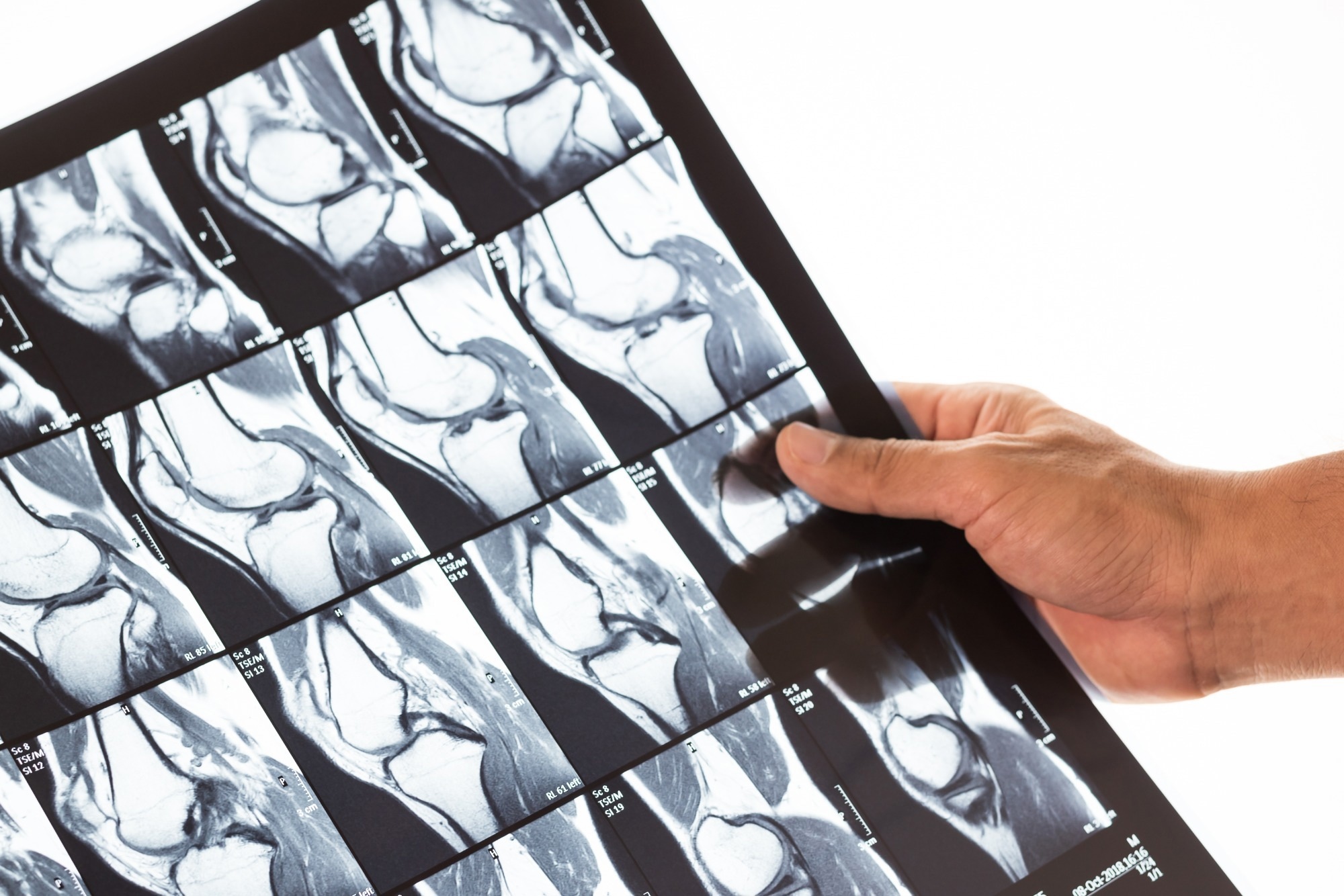A recent article published in Engineering proposed a novel approach to enhance the osteogenic and antibacterial properties of sulfonated polyetheretherketone (sPEEK) using self-assembled black phosphorus (BP) nanosheets, mussel-inspired polydopamine (PDA), and the bioactive E7 peptide.

Image Credit: Komsan Loonprom/Shutterstock.com
Background
Polyetheretherketone (PEEK) is a high-performance semicrystalline polymer used in bone implants due to its biocompatibility, chemical stability, and elastic modulus, which are similar to those of human bone. However, its biological inertness hampers osteogenesis and allows bacterial colonization at the implant-bone interface.
PEEK can be modified with BP nanosheets, a narrow bandgap semiconductor with excellent bone-repair potential and the ability to kill bacteria via the photothermal effect. However, BP nanosheets degrade rapidly in complex physiological environments, necessitating modification for use in biological applications.
A multifunctional coating of PDA acts as "biological glue," enhancing both the stability and photothermal properties of bare BP nanosheets. Additionally, composite nanoparticles formed through the self-assembly of BP and PDA provide a high specific surface area and viscosity, making them ideal for loading functional molecules like the E7 peptide.
This short peptide has a strong affinity for bone marrow mesenchymal stem cells (BMSCs), promoting osseointegration when applied at the implant-bone interface.
Methods
Medical-grade PEEK of various shapes and sizes was used in this study. It was first transformed into sPEEK by immersing it in 97-99 wt.% sulfuric acid with magnetic stirring at 25 °C for 5 minutes. The sPEEK was then decorated with BP nanosheets mixed with PDA and grafted with the E7 peptide to create sPEEK/BP/E7 samples.
Surface morphologies and elemental distribution of the samples were analyzed using field-emission scanning electron microscopy (FESEM) and energy-dispersive spectrometry (EDS). The photothermal properties were evaluated using a near-infrared (NIR) thermal imaging system with an 808 nm laser.
BMSCs for bioanalysis were extracted from the femoral bone marrow of 4-week-old Sprague-Dawley rats and used for cell proliferation analysis on various PEEK samples. Proliferation was measured through 5-ethynyl-2'-deoxyuridine (EdU) staining and a cell counting kit (CCK-8) after 1, 3, 5, and 7 days of culturing.
In vitro osteogenicity of the prepared samples was evaluated by assessing their ability to recruit BMSCs and promote the expression of bone-specific proteins, including osterix, Runx-2, and osteocalcin (OCN). Osteogenic gene expression was further analyzed using real-time polymerase chain reaction (RT-PCR).
In parallel, the in vitro antibacterial activity of the implant material was tested through bacterial assays involving Staphylococcus aureus and Escherichia coli.
In vivo studies of photothermal antibacterial and osteogenic properties were conducted using a rat femoral condylar defect model. These experiments included thermal imaging and micro-computed tomography (micro-CT) analysis.
Additionally, the biosafety of sPEEK/BP/E7 under NIR irradiation was assessed by conducting histopathological analyses of major organs, such as the heart, liver, spleen, lungs, and kidneys.
Results and Discussion
FESEM images revealed a micro/nano-scale three-dimensional porous network on the surface of sPEEK, promoting cell anchoring and tissue growth. This porous structure became more complex, with an increased pore number and smaller pore size after modification with BP/PDA and E7. EDS and fluorescence images confirmed the uniform deposition of BP nanosheets and E7 on sPEEK.
The wettability of sPEEK/BP/E7 samples was improved compared to sPEEK alone, facilitating better cell adhesion and osteogenic response by increasing cell affinity. Additionally, sPEEK/BP and sPEEK/BP/E7 showed an enhanced photothermal effect after 500 seconds of NIR irradiation, thanks to the uniform BP/PDA coating.
In in vitro cell activity analysis, sPEEK/BP/E7 demonstrated the highest viability of BMSCs, attributed to the presence of the E7 peptide. Furthermore, the number of BMSCs spanning the pores of sPEEK/BP/E7 was significantly greater than that of sPEEK and sPEEK/BP in the Transwell migration test. sPEEK/BP/E7 also exhibited the highest levels of extracellular matrix mineralization, followed by sPEEK/BP.
RT-PCR results confirmed that sPEEK/BP/E7 effectively induced the differentiation of BMSCs into osteoblasts. Additionally, the BP/PDA coating on sPEEK achieved 100 % inhibition against Staphylococcus aureus and 93.1 % against Escherichia coli, demonstrating excellent in vitro photothermal antibacterial properties for both sPEEK/BP and sPEEK/BP/E7.
In vivo studies showed that, while sPEEK samples exhibited bacterial growth after NIR irradiation, sPEEK/BP and sPEEK/BP/E7 implants had significantly reduced bacterial growth. Furthermore, substantial new bone formation was observed around the sPEEK/BP and sPEEK/BP/E7 implants compared to sPEEK, with the new bone fully encircling the sPEEK/BP/E7 implant. Importantly, the sPEEK/BP/E7 coating showed no signs of metabolic toxicity in rats.
Conclusion
The researchers successfully demonstrated that modifying sPEEK with BP/PDA and E7 significantly enhanced its photothermal antibacterial activity and osteogenic properties.
The remote, noninvasive, and on-demand photothermal antibacterial effect of sPEEK/BP/E7, driven by BP/PDA, is vital for preventing or treating implant-related infections. Additionally, the BMSC affinity of E7 and the phosphorus content of BP provided sPEEK/BP/E7 with superior osseointegration and bone-regeneration capabilities.
With further validation through clinical trials, the "all-in-one functional" sPEEK/BP/E7 implant holds great potential as an innovative solution for bone repair.
Journal Reference
Wang, X., et al. (2024). Black Phosphorus and E7-Functionalized Sulfonated Polyetheretherketone with Effective Osteogenicity and Antibacterial Activity. Engineering. DOI: 10.1016/j.eng.2024.07.019, https://www.sciencedirect.com/science/article/pii/S2095809924004867
Disclaimer: The views expressed here are those of the author expressed in their private capacity and do not necessarily represent the views of AZoM.com Limited T/A AZoNetwork the owner and operator of this website. This disclaimer forms part of the Terms and conditions of use of this website.